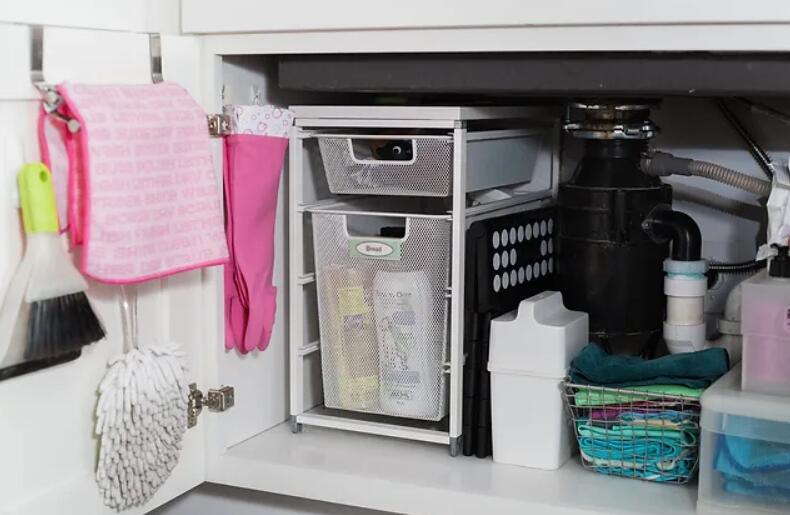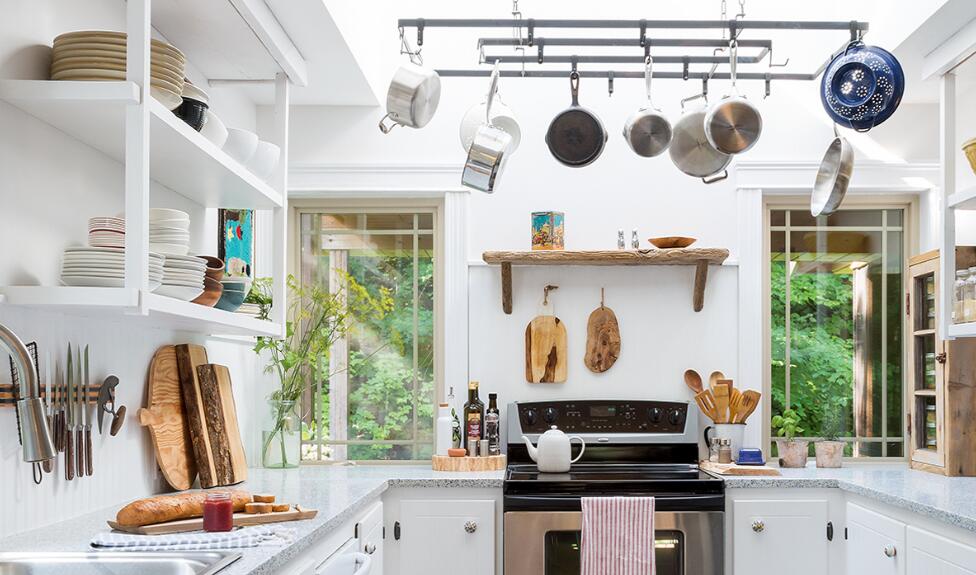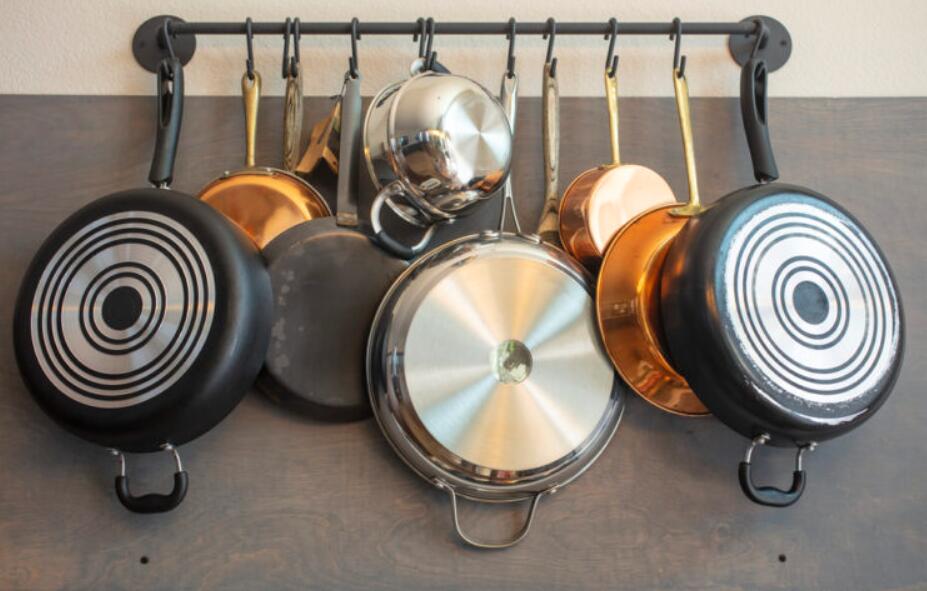Having an organized kitchen is essential for any cooking enthusiast. A well-organized space not only enhances cooking efficiency but also reduces stress by allowing easy access to pots, pans, and cookware. In this step-by-step guide, we will walk you through the process of organizing your pots, pans, and cookware, ensuring that everything is in its rightful place. By following these simple steps, you can transform your kitchen into a functional and streamlined space.
Assessing Your Kitchen Space and Requirements
Before diving into organizing your pots, pans, and cookware, it’s important to thoroughly assess your kitchen space and specific requirements. This will help you determine the best storage solutions and ensure that everything is easily accessible when you need it.
Evaluate Available Storage Space
Start by taking a close look at the available storage space in your kitchen. Consider the following areas:
- Cabinets: Take note of the number of cabinets you have and their sizes. Measure the interior dimensions of each cabinet to determine how much space you have for your pots, pans, and cookware.
- Shelves: Assess any open shelves in your kitchen. These can be used for storing cookware that you use frequently and want to have easily accessible.
- Drawers: Check the number and sizes of drawers in your kitchen. These are ideal for small cookware items such as lids, spatulas, and measuring cups.
- Hanging Space or Pot Racks: If you have extra vertical space, consider installing a hanging rack or pot rack. This not only adds storage but also adds a decorative element to your kitchen.
Consider Your Cooking Habits and Cookware
Understanding your cooking habits and the types of cookware you own is crucial for effective organization. Ask yourself the following questions:
- Which pots, pans, and cookware items do you use most frequently? These should be easily accessible, preferably in a cabinet or shelf that is within arm’s reach of your cooking area.
- Are there any items that you rarely use or need to replace? If you have cookware that you no longer use or that is damaged, consider decluttering and donating them, freeing up valuable space in your kitchen.
- Do you have specialized or seasonal cookware? If you have cookware items that are only used for specific purposes or during certain seasons, it might be practical to store them separately from your everyday cookware.
By carefully evaluating your kitchen space and considering your specific cooking habits and cookware, you can develop a plan for organizing your pots, pans, and cookware in a way that suits your needs best.
Decluttering and Preparing the Kitchen
Before you begin organizing your pots, pans, and cookware, it’s essential to declutter and prepare your kitchen. This will create a clean and organized starting point for the organization process.
Empty and Clean the Cabinets
Start by emptying the cabinets where you plan to store your pots, pans, and cookware. Remove everything and thoroughly clean the cabinet interiors. This step allows you to start with a fresh canvas and ensures that there is no build-up of dirt or debris.
Sort and Declutter
Now that your cabinets are empty, it’s time to sort through your pots, pans, and cookware items. Follow these steps to declutter effectively:
- Categorize by function and size: Group similar items together based on their purpose and size. For example, separate frying pans from saucepans and sort them by size to make it easier to find the specific item you need.
- Discard or donate: Take the opportunity to declutter by getting rid of items you no longer use or those that are damaged beyond repair. Donate usable cookware to a local charity or consider recycling options for items that cannot be salvaged.
- Consider specialized or seasonal cookware: If you own cookware that is only used for specific purposes (e.g., a turkey roaster) or during certain seasons (e.g., an ice cream maker), store them separately from your everyday cookware to free up space for items you frequently use.
By decluttering and streamlining your pots, pans, and cookware collection, you ensure that you only keep the items you truly need and use, making the organization process more efficient.
Choosing the Right Organizers
Once you have assessed your kitchen space, decluttered, and prepared the cabinets, it’s time to choose the right organizers to maximize efficiency and accessibility for your pots, pans, and cookware.
Cabinet Organizers
Utilizing cabinet organizers can greatly enhance the functionality of your kitchen cabinets. Consider the following options:
- Pot and Pan Racks: Install pot and pan racks inside cabinets or on the cabinet door to neatly stack and organize your cookware. This ensures easy access and eliminates the need to rummage through stacks of pots and pans.
- Adjustable Shelving: If your cabinets have fixed shelves, consider installing adjustable shelves or shelf risers to maximize vertical space and accommodate different-sized cookware items.
- Pull-Out Drawers: Install pull-out drawers in lower cabinets to make it easier to access pots and pans stored at the back. These drawers glide smoothly, allowing you to pull them out fully and retrieve items effortlessly.
- Divider Inserts: Use divider inserts to create separate compartments within your cabinets. This helps to keep lids, baking sheets, and cutting boards organized and prevents them from getting stacked haphazardly.
Hanging and Wall Storage
Take advantage of empty wall space or unused ceiling space by incorporating hanging and wall storage solutions.
- Wall-Mounted Pot Racks: Install wall-mounted pot racks to hang your pots, pans, and cooking utensils. This not only provides easy access but also adds a decorative and stylish touch to your kitchen.
- Pegboards: Use pegboards to create a customizable and versatile storage solution. Hang your cookware and cooking utensils using hooks or S-hooks, allowing you to easily rearrange and adjust as needed.
- Magnetic Strips: Attach magnetic strips to the wall to store metal utensils, such as knives or metal measuring spoons. This keeps them within reach while freeing up drawer space.
By choosing the right organizers for your kitchen, you can maximize storage space and create an efficient and visually appealing setup for your pots, pans, and cookware.
Organizing Your Pots, Pans, and Cookware

Now that you have assessed your kitchen space, decluttered, and chosen the right organizers, it’s time to start organizing your pots, pans, and cookware in a way that is functional and efficient.
Group Similar Items Together
Start by grouping similar items together. For example:
- Group pots and pans by size: Stack pots and pans of similar sizes together to save space and make them easier to retrieve.
- Organize lids: Store lids in a separate section or using lid organizers. This prevents them from cluttering your cookware and makes it easier to locate the appropriate lid.
- Sort utensils: Arrange your cooking utensils such as spatulas, ladles, and tongs in a utensil holder or drawer organizer, keeping them within easy reach of your cooking area.
Utilize Vertical Space
Make the most of your available vertical space:
- Hang pots and pans: If you have a pot rack or hanging space, hang your pots and pans to free up cabinet and shelf space. Ensure they are organized in a way that allows you to easily reach the desired item.
- Utilize shelf dividers: Place shelf dividers to create separate sections for different types of cookware. This prevents items from toppling over and keeps everything in order.
Label and Arrange for Easy Access
Labeling and arranging items for easy access improves efficiency in your kitchen:
- Label shelf or cabinet sections: Use adhesive labels or marker pens to label sections within your cabinets or on shelves. This helps you and others quickly identify where items should be placed.
- Arrange according to frequency of use: Store the cookware you use most often in easily accessible areas, while items used less frequently can be stored in higher or lower cabinets or on higher shelves.
By following these organizing strategies, you can enjoy a well-structured and efficient kitchen space with easy access to your pots, pans, and cookware whenever you need them.
Consider Stackable Solutions
When looking for stackable solutions for your pots, pans, and cookware, consider the following options:
- Stackable pots and pans: Look for pots and pans that are designed to nest together, with lids that fit multiple sizes. This saves space in cabinets or drawers and allows for easy access to the cookware you need.
- Stackable storage containers: Opt for stackable storage containers with secure lids for storing smaller cooking items such as measuring cups, colanders, and mixing bowls. This helps to maximize vertical space and keep your kitchen organized.
Create a Dedicated Baking Zone
To create an efficient and organized baking zone in your kitchen, consider the following steps:
- Group baking essentials together: Dedicate a specific area, such as a cabinet or shelf, to store all your baking supplies. Keep baking sheets, cake pans, muffin tins, and other baking-related items together in this designated zone.
- Utilize vertical storage: Install wire racks, hooks, or shelves on the wall or inside a cabinet to take advantage of vertical space. Use these storage options to hang baking pans, cooling racks, and even measuring cups or spoons.
- Label and organize ingredients: Transfer commonly used baking ingredients like flour, sugar, and baking powder into clear, airtight containers or jars. Label them clearly and arrange them within the baking area for easy access and visual appeal.
Periodically Reassess and Adjust
To maintain an organized system for your pots, pans, and cookware, make sure to regularly reassess and adjust your organization methods:
- Regular decluttering: Set aside time every few months to declutter and reassess your collection of pots, pans, and cookware. Remove any items that are damaged, duplicates, or no longer needed.
- Reorganize for efficiency: As your cooking habits or needs change, adjust your organization system accordingly. Consider reorganizing based on frequency of use, accessibility, and any new additions to your cookware collection.
By paying attention to these specific details in each section, you can implement practical and tailored solutions to organize your pots, pans, and cookware effectively.
Consider Storage Solutions for Non-stick Cookware
To properly store and protect your non-stick cookware, consider the following storage solutions:
- Protect the non-stick coating: To avoid scratching or damaging the delicate non-stick coating, place a soft cloth or silicone mat between stacked pans or nested pots. This creates a buffer to prevent any potential abrasions.
- Use pan protectors: Invest in pan protectors, which are fabric or foam discs designed specifically for non-stick pans. These discs can be placed between the pans to provide an extra layer of protection and prevent scratching or sticking.
- Store pans upright: Instead of stacking non-stick pans on top of one another, consider storing them upright. This arrangement prevents any potential weight or pressure from damaging the non-stick coating and allows for easy selection and retrieval.
Incorporate Stylish Display Options
If you have visually appealing cookware or pieces that you want to showcase, consider incorporating stylish display options into your kitchen:
- Pot racks: Install a pot rack that hangs from the ceiling or mounts on the wall. This not only adds a decorative element to your kitchen but also provides a convenient and visible space to display your beautiful or unique pots and pans.
- Open shelving: Consider installing open shelves in your kitchen to display your favorite cookware items or decorative pieces. This allows you to show off your collection while maintaining accessibility. Arrange the items in an aesthetically pleasing way, keeping the frequently used ones within easy reach.
- Display stands or hooks: Use display stands or hooks on the countertop or walls to showcase specific cookware pieces, such as decorative copper pots or unique baking dishes. This can serve as both functional storage and visual interest in your kitchen.
Maintain a Clean and Organized System
To keep your organized system intact and ensure easy access to your pots, pans, and cookware, make it a habit to:
- Put things back in their designated spots: After using pots, pans, or cookware, clean them and return them to their designated storage locations immediately. Avoid leaving them on the countertop or stove, as this can lead to clutter and disorganization.
- Regularly clean and declutter: Schedule regular cleaning sessions to wipe down your cabinets, shelves, and organizers. Take the opportunity to declutter any items that may have accumulated over time and donate or discard items you no longer use or need.
- Maintain a cleaning routine for your cookware: Follow the manufacturer’s instructions for cleaning and maintaining your cookware, whether it’s non-stick, stainless steel, or cast iron. Proper cleaning and care ensure the longevity of your cookware and keep them in good condition.
By incorporating these specific strategies, you can create an organized and visually appealing kitchen while ensuring the longevity and accessibility of your pots, pans, and cookware.
Utilize Drawer Dividers
For efficient storage of utensils, consider utilizing drawer dividers to keep them organized:
- Choose adjustable dividers: Look for dividers that can be easily adjusted to fit different sizes of utensils. This allows you to customize the spaces in your drawer to accommodate various utensils, such as spoons, forks, knives, and kitchen gadgets.
- Separate utensils by type: Arrange your utensils in sections based on their type or purpose. For example, keep all the spoons together, forks in another section, and knives in a separate compartment. This makes it easier to locate specific utensils when you need them.
- Consider additional compartments: If you have specialized utensils or small gadgets, consider adding extra compartments within the drawer. This helps prevent them from getting mixed up with other utensils and makes it easier to find them.
Use Hanging Racks for Pot Lids and Cutting Boards
To effectively organize pot lids and cutting boards, consider using hanging racks:
- Install a lid rack: Mount a lid rack on the inside of a cabinet door or on the wall. This provides a convenient place to store pot lids vertically, keeping them easily accessible and saving space.
- Hang a cutting board rack: Use a rack specifically designed for cutting boards. Attach it to the inside of a cabinet door or wall to keep your cutting boards organized and within reach.
- Opt for adjustable hooks: Choose hooks that can be adjusted to accommodate different sizes of pot lids and cutting boards. This ensures a secure and customized fit.
Conclusion
Organizing your pots, pans, and cookware is essential for a functional and efficient kitchen. By considering stackable solutions, creating a dedicated baking zone, reassessing and adjusting periodically, and utilizing storage solutions for non-stick cookware, you can maximize your kitchen’s space and accessibility.
Moreover, incorporating stylish display options, using drawer dividers, hanging racks for pot lids and cutting boards, and labeling and categorizing food storage containers can bring both practicality and aesthetics to your kitchen organization.
Don’t forget to maintain a clean and organized system by putting things back in their designated spots, regularly cleaning and decluttering, and maintaining a cleaning routine for your cookware and utensils.
Lastly, storing small kitchen gadgets in drawer organizers, utilizing hanging storage for baking tools, and creating a spice organization system contribute to a well-organized and functional kitchen space.
With these specific tips and strategies, you can transform your kitchen into a well-structured, clutter-free environment that facilitates efficient meal preparation and enjoyable cooking experiences.


